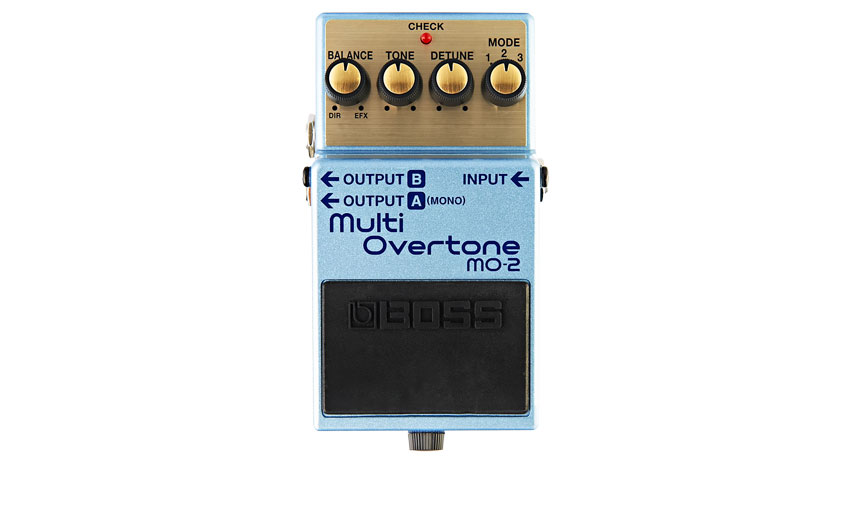MusicRadar Verdict
A tone transformer, but maybe not for the traditionalists.
Pros
- +
Touch sensitivity. Varied range of sounds available.
Cons
- -
The modulation might be a bit much for some.
MusicRadar's got your back
The remit of Boss' new MO-2 Multi Overtone stompbox is to use your guitar's harmonic characteristics to create a wide range of new sounds.
Build
There are standard knobs for setting the balance of the dry sound to effect and tweaking the overall tone, plus a detune knob for adjusting the depth of a detuning effect, which is delivered via three selectable modes.
Sounds
"There's plenty of effected weirdness on offer to make your guitar sound un-guitar-like"
What's going on with the MO-2 is similar to a harmoniser or octave pedal but with a modulation twist. With the detune knob at minimum, we get an almost unadulterated, albeit synthesised, extra note.
The three modes each deliver in a different register and seem equivalent to an octave up, unison and octave down. With the upper octave and minimum detune we can dial in a touch of 12-string jangle.
Start advancing the detune and the effect gets, er, more effected. We are not sure exactly what's happening in technical terms, but there's more modulation going on, and it's like adding a bucketload of swirly chorus that can sound like multiple guitars playing or a particularly raucous rotary speaker. It's quite musical most of the way up the range, although at the far end of the travel, the pitch changes might be too overdone for some players.
In mode two, you get frequencies that can thicken the signal, while mode three is for those who like to get heavy. If you want to add some weight and girth to your guitar as well as the modulation, or go for a 'church organ of doom' sound, then this is the way to go.
Every mode on the pedal tracks polyphonically, so you can use the effect on chords as well as single notes and, while there's plenty of effected weirdness on offer to make your guitar sound un-guitar-like, with subtle setting of the mix knob you can add an underlying extra something to enhance your standard sound in a pleasing way.
Trevor Curwen has played guitar for several decades – he's also mimed it on the UK's Top of the Pops. Much of his working life, though, has been spent behind the mixing desk, during which time he has built up a solid collection of the guitars, amps and pedals needed to cover just about any studio session. He writes pedal reviews for Guitarist and has contributed to Total Guitar, MusicRadar and Future Music among others.
“Sometimes I am two people. Johnny is the nice one. Cash causes all the trouble. They fight”: How Johnny Cash drew on his own experiences to make his greatest songs
“For those on the hunt for a great quality 12-string electro-acoustic that won’t break the bank, it's a no-brainer”: Martin X Series Remastered D-X2E Brazilian 12-String review
“I have that on more records than anything else”: Take a peek inside Vaughn Oliver’s studio











